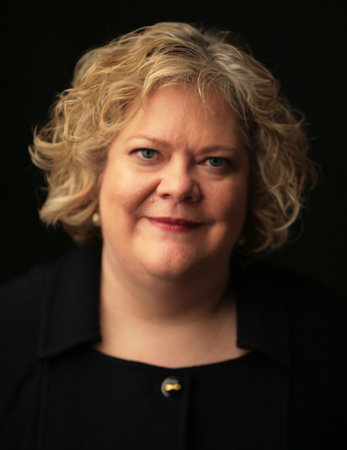This episode of How to Cover Money covers the art form of asking questions. Although it may take a while to learn, co-hosts Micki Maynard and Mark Remillard make it clear that any reporter can learn how to ask “good dumb questions” during interviews to get the information you most want to report on and make your reporting understandable for your audience.
Transcript
[Intro Music]
Micki Maynard: How to Cover Money: Thinking like a business reporter, even when you’re not one. Welcome to the Reynolds Center podcast. We’re coming to you from the Donald W. Reynolds National Center for Business Journalism. We’re based at the Walter Cronkite School of Journalism and Mass Communication at Arizona State University. I’m Micki Maynard, Director of the Reynolds Center, and here with me is my co-host, Mark Remillard. He’s a Cronkite alumni and a reporter and anchor with KTAR News in Phoenix. Hello Mark!
Remillard: Hello Micki.
Maynard: Today we bring you. Series 1, Episode 5: The Art of Asking The Good, Dumb Question.
Remillard: Yes, the good dumb question is, can be especially important in business reporting. People are expected to be experts on things, but if you’re going out and you’re doing a business story on something that you’ve never done before, how are you expected to be an expert?
Maynard: That’s a big question, and it’s something that we’ve been talking about all through this podcast, to be brave enough to ask the good, dumb question. Well, it’s absolutely a requirement that you understand what you’re writing about or talking about on the air, because you cannot fudge it. You have to get it or your audience won’t.
Remillard: So when you don’t understand, that’s when you often have to ask that good dumb question.
Maynard: Right. And we get the phrase the good dumb question from my editor at The New York Times, Adam Bryant. And Adam basically says that it does take courage to admit that you don’t know what you’re about to write about, and so the point of asking the good, dumb question is to get an understandable answer. You are not showing off here. You are not trying to portray yourself as smart as the person that you’re covering. You’re basically asking for their mercy and saying, “Look, I need to understand this so people can understand this.”
Remillard: How do you answer? How do you ask the good, dumb question, not just the dumb question.
Maynard: Well, you can’t be dumb. This is not time for a blonde or a bro moment. You have to do your research. So at the very least, before you do an interview, you need to read up on the person you’re interviewing, or the company that you will be writing about or broadcasting about. And I want to share a little story about an interview that I did with Akio Toyota, who is the CEO of the Toyota Motor Company. This is back in 2008 and I was traveling to Japan to do interviews for a book, and also some work for The New York Times. And they don’t give you the complete schedule when you leave, you get the schedule of interviews when you get there. And I looked at the schedule of interviews, and it said A. Toyota, and at that point in time, he was not yet the CEO, nor had he been interviewed for the last five years. So this was a really tough challenge to find information about him, because all I could find was the basic bio, “grandson of the founder of Toyota.” So what I had to do was dig, dig, dig, dig, dig. And I was up until three o’clock in the morning the night before the interview. But one thing I managed to find was a speech that he gave in Dubai to car dealers, and it wasn’t much, but it was something. So I made some notes from that interview that he had done, and I got to Toyota’s headquarters the next day. We entered this very formal conference room, we sat down to do the interview. There was a translator there, sorry, an interpreter there, and we started to have a conversation. And I said, “Oh, well, in your speech to the car dealers in Dubai…” And he said, “Dubai, how did you find this?” And I said, “I just kept doing my research.” And he was very impressed that I had dug deep enough into Google to find his speech to the car dealers in Dubai. Sometimes you have to read in five or six or seven or eight pages to find the information that you’re looking for.
Remillard: Yeah, that can be a great way to get someone to open up to you and really know that you’ve done your homework. I found one other way, that I’ve done, is if you’re talking with the press person that kind of handles some of their media relations. Sometimes you can ask them, “you know, hey, what are some things I should ask them about? Or what are some things that might be little known about this person?” I remember, I was interviewing chief of police here in Phoenix, and I asked this press person that and I found out that he actually loves to tend bonsai trees. Just a really, you know, off the wall, off the cuff thing, but when I get into this interview with him, and I’m trying to, I was doing a profile, but you’re sitting there, and you’re looking into ways that you can get him to open up, you know, you ask him about bonsai trees, and it’s very out of left field, but it just shows that you really know what you’re talking about.
So when you’re in the middle of an interview with somebody and you’re not understanding something, or they’re explaining and they jump off on a tangent, how do you steer the conversation back? How do you make sure that you’re getting exactly what you need them, so that you understand the story?
Maynard: So if it’s goes off in a direction that confuses you, you absolutely have to stop. You just have to say, “you know, can you repeat that” or “let me see if I understand that?” And one of the tactics you can use is to repeat back to them what you think you heard, and sometimes you got it and sometimes you didn’t. And it’s better to do it that way than to basically say, “I’m completely confused.” I would I would try to avoid looking dumb. I would basically say, “You know what you got ahead of me here, can I back you up and ask you to explain it?” And as we’ve said on other podcasts, a lot of these people live in bubbles, and they are used to explaining things to their peers, not to the general public, and not to you as business journalists. So, you’re in there and you’re hearing it maybe for the first time, and all the 50 scientists in the room know what he’s saying, but you don’t.
Remillard: Yeah, I’ve also found it, repeating it back can help you, especially if it’s something that’s controversial, or where, where, when as a reporter, you almost have to be like a lawyer with the way you write it. You have to be so careful to make sure that what accusations or whatever is being said is exactly what was said, not you know that you’re not alluding to anything that wasn’t said or putting words in people’s mouths and reiterating it back. You can say, “Can I say it like this?” And sometimes I’ll be able to, because it might be a simpler version of it.
Maynard: Well, people love to be teachers, and if you get it wrong, they’ll correct you. And this is one of the pitfalls, especially for people who are covering money for the first time, is that there’s a lot coming at you. There are a lot of reporters, possibly on a beat that you’re starting for the first time. And I want to just say that at the Reynolds Center, we have a lot of basic information for people who are starting beats. So please come to our website and look at all the resources that we have. But you should definitely, if you don’t understand something, definitely get a clarification.
Remillard: Sometimes, when you’re talking with the head of a company or a business owner who might not have some of these numbers and things off the top of their head, and you’re asking them, well, how much did you make last year, your company? Or you’re asking them for the specifics, and sometimes they don’t have that. So where’s a good place to go that you can kind of get that information confirmed at least.
Maynard: First of all, you should always be working with the PR person, if there is one, on the story for numbers, because it’s up to the PR person to give you the most recent numbers. I would also probably double check some of those numbers with the Securities and Exchange Commission with public data that’s available, because even the PR people can mess up sometimes. I think the other thing that you have to consider is that this is, the stakes are big. So when you’re interviewing a corporate executive, you get a number wrong in the story, and there might be somebody who’s thinking about buying their stock, so you might look at the numbers and report that the earnings were up 10% when they were really up 100% and there might be somebody reading that story who’s thinking about investing in that company, and it says, “oh, you know, their earnings were only up 10% I was under the impression they are per 100%.” So it’s really up to you to get it right. The other thing I would say is, if you ever do get anything wrong, and I’ve lost a lot of sleep over errors in stories, fix it as quickly as possible. If it’s a print story, fix it right away, or a web story, fix it right away. If it’s a broadcast story, make sure that your anchor reads a correction at some point in time and posts it to your website.
Remillard: That’s it for Series 1, Episode 5 of How to Cover Money. Next episode, we’ll look at how to get people to talk to you.
Maynard: Support for our podcast comes from the Donald W. Reynolds National Center for Business Journalism. Visit our website at businessjournalism.org, you can find us on Twitter @bizjournalism. That’s at B I Z journalism. You can also look us up on Facebook, LinkedIn, and Tumblr. For Mark Remillard, I’m Micki Maynard. Now, start thinking like a business reporter.
[Outro Music]



